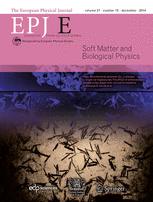May 22 2015
Water behaves in mysterious ways. Especially below zero, where it is dubbed supercooled water, before it turns into ice. Physicists have recently observed the spontaneous first steps of the ice formation process, as tiny crystal clusters as small as 15 molecules start to exhibit the recognisable structural pattern of crystalline ice.

This is part of a new study, which shows that liquid water does not become completely unstable as it becomes supercooled, prior to turning into ice crystals. The team reached this conclusion by proving that an energy barrier for crystal formation exists throughout the region in which supercooled water's compressibility continues to rise. Previous work argued that this barrier vanished as the liquid gets colder. These findings have been published in EPJ E by Connor Buhariwalla from St. Francis Xavier University in Antigonish, Canada and colleagues.
Interestingly, liquid water becomes easier to compress, the colder it gets - unlike other substances, which become harder to compress as temperature drops. The origin of water's compressibility behaviour has been debated for decades. One possible explanation - still unconfirmed--for this unusual phenomenon stems from the presence of a transition, similar to the liquid-gas transition found when water becomes vapour. The difference: in supercooled water the transition is from one phase of liquid to another, very similar, phase of liquid water, upon cooling.
The problem is that in a normal experiment, supercooled water crystallizes under the conditions at which the liquid-liquid phase transition is predicted to occur. Accordingly, the team instead examined a model describing the behaviour of supercooled water, in which previous work showed a phase transition. There, they calculated the so-called free energy cost for the formation of small ice crystal nuclei. These findings help explain why water can be found in two very different solid forms that do not exhibit a crystalline structure, unlike ice in a freezer, called low-density and high-density amorphous ice.
Source: http://www.springer.com